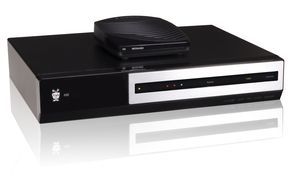Comcast Tees Up Switched Video Rollouts
Comcast expects to deploy switched digital video in several cable systems later this year -- with plans to expand into other markets in 2011 and 2012 -- which will let it offer more than 150 HD channels and roll out new services like 3DTV, the company said in a filing with the Federal Communications Commission.
The operator did not indicate where it will commercially launch SDV first. Comcast said it expects SDV will "result in the launch of at least 50 additional HD channels, bringing the total number of HD channels in these systems to over 150."
As SDV capacity increases over time, the operator said, it will be able to launch 3DTV, offer additional niche-interest and ethnic channels, and deliver faster broadband services. Comcast outlined the plans in comments filed Monday in response to the FCC's proposed changes to CableCard rules, designed to "improve" CableCard rules until there's a successor solution such as outlined the agency's "AllVid" notice of inquiry.

Switched digital video more efficiently delivers less-watched linear TV channels, by transmitting them only when a customer in a given service group requests them unlike traditional cable services in which all channels are broadcast to all homes at all times.
However, one-way CableCards devices are unable to access SDV channels. Comcast said that with the proposed switched digital video launches, it will provide "tuning adapters" to subscribers with CableCard-enabled TiVo DVRs and other devices at no additional charge. Tuning adapters from both Cisco and Motorola have been deployed by cable operators, including Time Warner Cable and Cox Communications.
Comcast told the FCC that the tuning adapters are likely to cost "tens of million[s] of dollars" if many customers with CableCards elect that option. "Comcast is making these expenditures in fulfillment of the cable industry's commitments to TiVo," the company said.
As of the end of February, Comcast had 296,967 CableCards installed in active customer homes, according to the most recent quarterly report on CableCards from the National Cable & Telecommunications Association. That's roughly 1% of Comcast's 23.5 million basic-video subscribers.
Multichannel Newsletter
The smarter way to stay on top of the multichannel video marketplace. Sign up below.
The cable industry has argued that the FCC's CableCard regime has failed and earlier this week the NCTA proposed that the commission stop requiring operators to use CableCards in their own set-tops. The latest FCC notice of proposed rulemaking on CableCards proposes requiring "more transparent" billing for CableCards; simplified installation processes; CableCards that can tune multiple streams; and a streamlined CableCard device certification process.
Comcast noted that its primary tool for freeing up bandwidth has been low-cost digital terminal adapters (DTAs) that let the MSO eliminate analog broadcasts by delivering expanded basic cable lineups in all-digital format.
The FCC has proposed to exempt all DTAs that lack DVR functionality from the "integration ban" that requires operator-supplied set-tops to include CableCards. Comcast said it "strongly supports" that position and that the FCC should also exempt HD DTAs, which would be "a particularly attractive option for secondary TVs in the home."
But along with the DTAs, Comcast said it "requires additional bandwidth-conservation tools to meet the ever-growing demands on our network" to explain the need for SDV.
TiVo, in prior comments to the FCC, proposed an "IP backchannel" proposal to deliver SDV channels to one-way cable devices. Comcast said it believes the tuning adapter is an "adequate solution" to enable customers with CableCard devices to access SDV channels.
"We have concerns about having to dedicate substantial engineering and other resources to develop a new solution for UDCP [unidirectional digital cable product] customers when the Tuning Adapter works perfectly well," Comcast said.
Comcast's SDV disclosures with the FCC were reported Tuesday by Light Reading Cable.
In 2007, Comcast had selected BigBand Networks' SDV management software. The MSO also around that time specified Motorola as an SDV supplier, as well as Arris and Harmonic for edge quadrature amplitude modulation devices.
At the time, Comcast said it was testing switched digital video systems in systems in Denver and New Jersey.
In 2008, the FCC's Enforcement Bureau issued orders fining Time Warner Cable and Cox for moving some channels from their broadcast lineups to SDV on the grounds that this violated "viewability" rules by making that programming inaccessible to CableCard-based devices like TiVos.
Last year, however, the FCC vacated those decisions, citing the "potential consumer benefits of SDV deployment, and other factors that limit the potential scope of consumer disruption."
